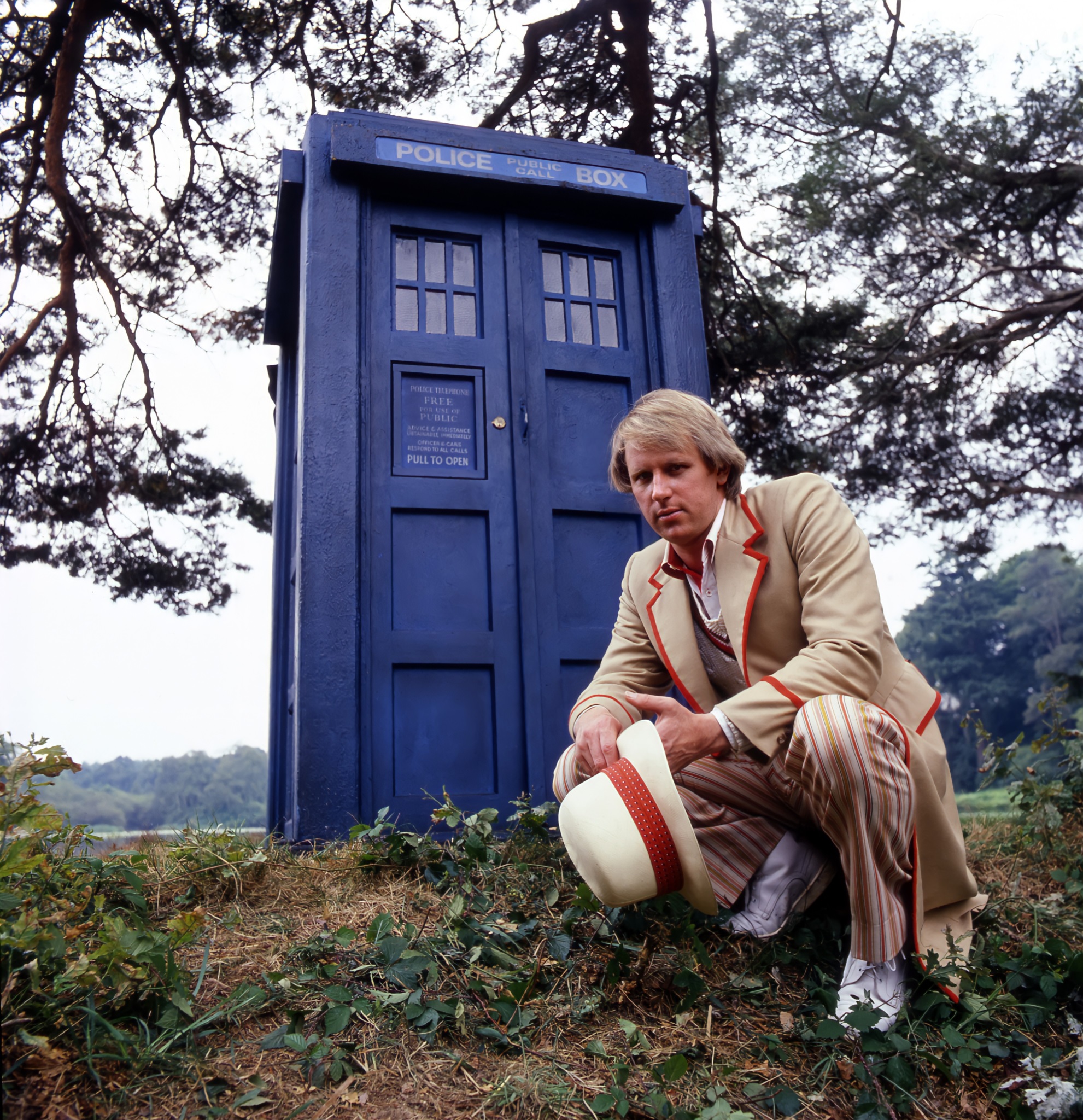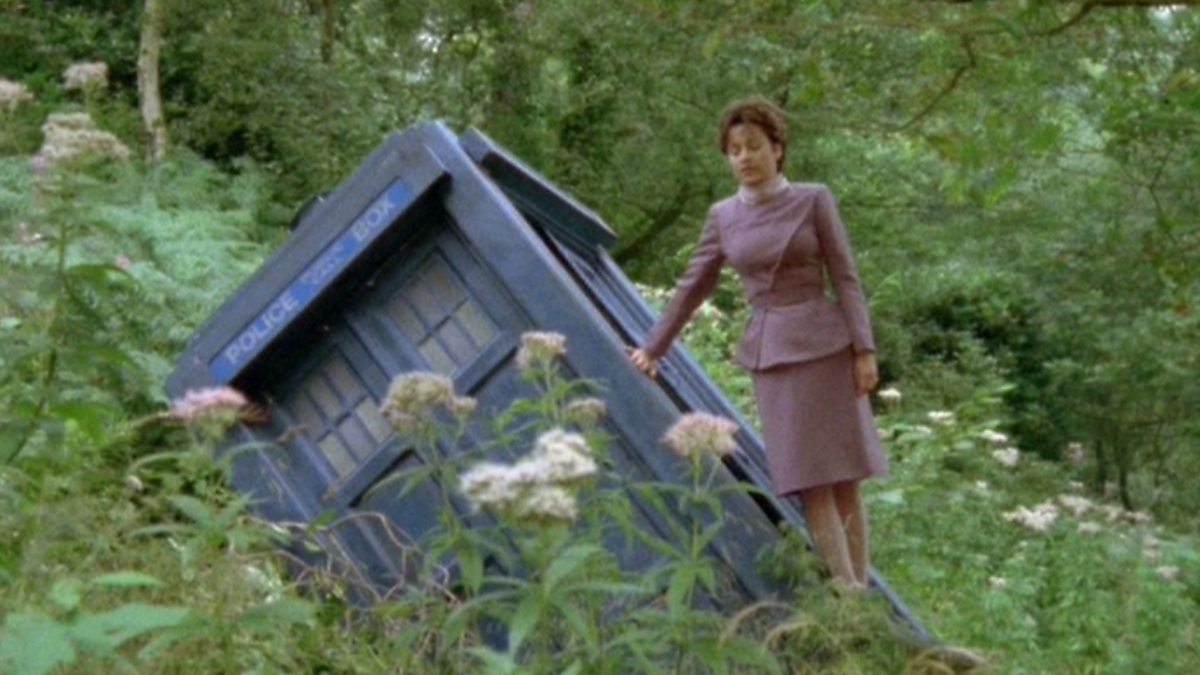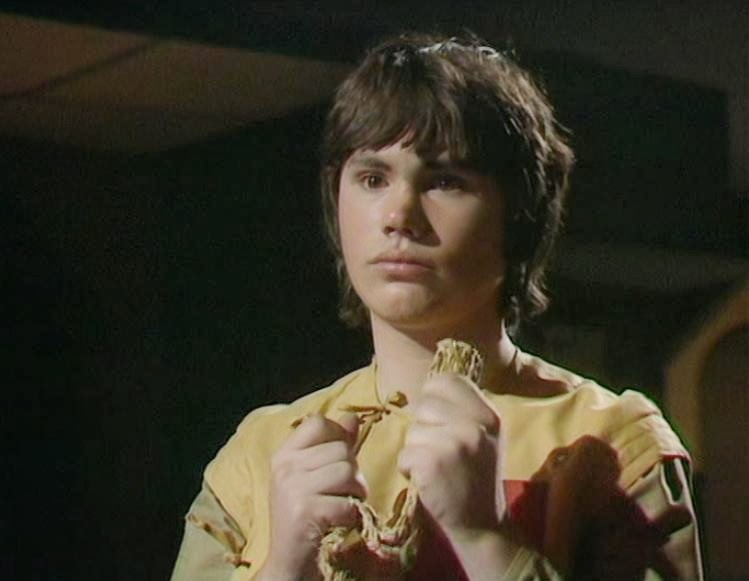In 1982, the Doctor Who ratings doubled when new Time Lord Peter Davison took over the TARDIS. What was it that brought viewers back in their millions?

As we’ve discussed in previous posts, the Doctor Who ratings tend to increase whenever there’s a change of Doctor. Much of this is down to curiosity: What will they be like? Will they meet the Daleks? Will they wear a scarf?!
Admittedly, few viewers predicted that the Fifth Doctor would end up with a stick of celery on his lapel, but certainly the freshness and quirkiness of his incarnation brought people back in droves. In 1982, Peter Davision was by far the youngest Doctor ever cast at a mere 31 – a record that wouldn’t be broken until the casting of Matt Smith in 2008 at the age of 26. So was it his youth and vigour that caused a spike in the Doctor Who ratings?
Perhaps. But it’s worth remembering that Peter Davison was also a very well known actor, having risen to fame as the vet Tristan Farnon in All Creatures Great and Small (among other things) so in Doctor Who terms he was quite a coup. It’s likely that many people who had never watched the show before tuned in to see how he would fair in the famous police box.

And just how many people were there? Well, Tom Baker’s final series hadn’t been the strongest performer in the Doctor Who ratings. Indeed, ‘Full Circle’ saw one of the biggest dips since the Patrick Troughton era, with just 3.7 million tuning in for its second episode.
That is why the Doctor Who ratings for Peter Davison’s first series were so staggering. The first episode of his first story ‘Castrovalva’ had a figure of 9.1, and by the time its fourth episode went out, the Doctor Who ratings had risen to an impressive 10.4. And whilst some of this can be explained by the initial interest in a new Doctor, it’s worth noting that many of his subsequent stories also saw figures over 10 million. Even ‘Time Flight’ – an oft criticised adventure – saw 10 million people tune in for its opening episode.

(C) BBC Studios
But could this Doctor Who ratings spike be entirely down to the Fifth Doctor? Probably not. For a start, it’s worth remembering that the series had recently undergone a change of leadership. John Nathan-Turner was now firmly in situ as the programme’s producer, and from the start he had been keen to bring Doctor Who up to date with a complete overhaul of its production values, including its theme music, incidental music and opening titles. Indeed, the latter now included a “discoteque” inspired synth arrangement along with a striking ‘tube lighting’ logo – all unashamedly 80s in tone.
As such, the general perception of the programme was changing. Doctor Who was no longer regarded as a tired old show from the 1970s (or even the 1960s) and had found its place as a programme for the modern generation. At the same time, it had undergone a tonal shift; the casual whimsy that had typified many of Tom Baker’s later stories had been replaced with more hard-bitten SF, which was underpinned by real science. In fact, Doctor Who was now being script edited by a real scientist.
And then there was the companion line-up. Tom Baker’s last series had begun with fellow Time Lord Romana and pet dog K9 in the TARDIS – a crew that John Nathan-Turner considered too “smart” for the casual viewer. He was keen to introduce characters with whom the audience could more easily identify, and who may be less ‘au fait’ with the precise workings of a quantum accelerator!
And Tegan Jovanka was one such character. As a modern day air hostess, Tegan was intelligent but didn’t have the cerebral superpowers of her predecessors Romana, Romana and K9 (yes, there were two Romanas.) In fact, in ‘Castrovalva’ the audience was shown just how uneducated in time travel she was, as she struggled to pilot the TARDIS to the famous Dwelling of Simplicity and ended up landing the machine on its side. And whilst comical, this moment also reflected how a typical 80s human would react when asked to take control of an alien super vessel. (I.e. not well!)

(C) BBC Studios
It could be argued, therefore, that the Doctor Who ratings rose in response to the ‘humanising’ of the TARDIS line-up – even if some of the characters were, in fact, aliens. Because there was also Nyssa of Traken, a character with a high degree of scientific ability, but one who had also lived a very sheltered life. Audiences could discover new worlds and learn new things about the universe through the eyes of a character who had never ventured far from home.
And then there was Adric. At the age of just 19, the actor Matthew Waterhouse was one of the youngest people ever cast as a Doctor Who companion. Originally conceived as an Artful Dodger-type, Adric was youthful and mischievous with a thirst for adventure – the kind of character who was meant to inspire the younger male viewers.

(C) BBC Studios
And did he succeed? Well, it’s fair to say that Adric doesn’t often show up on the lists of the most popular companions, but he didn’t exactly drive viewers away. Indeed, the Doctor Who ratings hit an impressive 9.6 million for his final appearance in ‘Earthshock’ part four. And he went on to make Doctor Who history as being one of a small handful of companions to be killed off, with Adric perishing as he attempted to defeat the Cybermen.
It was a bold decision, and one that (in part) explains the Doctor Who ratings success of the Fifth Doctor’s era. This was a time in the show’s history that dared to be different, unashamedly shaking up the tone, the storytelling, the production values, the casting… And this wasn’t a flash-in-a-pan success, either; the Doctor Who ratings remained strong throughout the Fifth Doctor’s time, and the series was still regularly pulling in 6-7 million viewers each week before the BBC suspended it in 1985.
What do you think is the main reason for the ratings success of the Fifth Doctor’s era? And which are your favourite stories from this time? Let me know in the comments below.

Tom Baker scarf – order now from the Lovarzi shop!








Leave a Reply